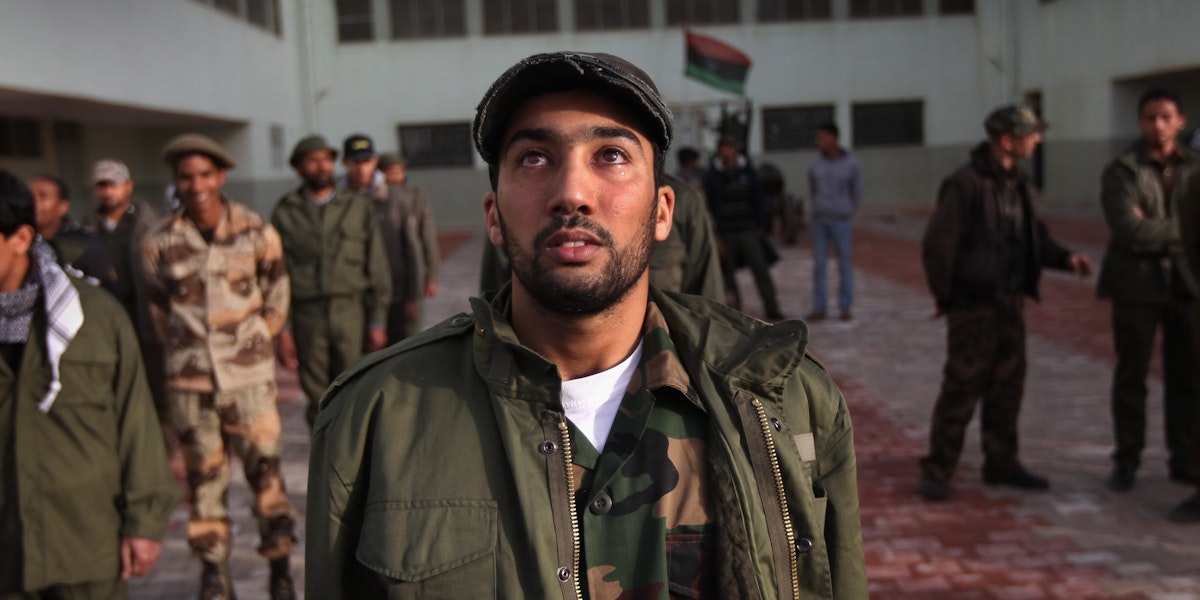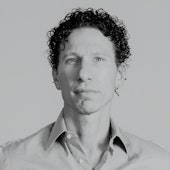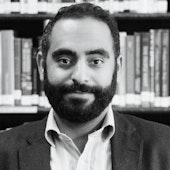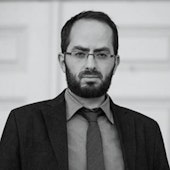Violence and direct armed conflict have always been a part of relations between states. But in the decades since the end of the Cold War and especially since 9/11, fragmented battlegrounds with a bewildering cast of armed groups seem to have become the most prominent features of conflict. Increasingly, wars do not involve a single, primary state rival. As a result, nonstate armed groups have become a key subject for those who study conflict, whether as policymakers or researchers.
Understanding nonstate armed groups (or “militias,” as they are often called) has been especially important for those who study the Middle East. But since the January 6, 2021 insurrection in Washington, armed groups have also taken a prominent place in analysis of the crisis in the United States. All too often, however, the problem of armed groups is considered in a vacuum or, at best, in regional silos. It is unusual to ask about the parallels and interconnections between violent armed groups across regions, and across ideologies. And yet, it is likely—and sometimes, demonstrable—that armed groups across the United States, Europe, and the Middle East and North Africa learn from each other, copy each other, and sometimes embody related patterns.
Of course, comparisons between armed groups in different regions and contexts should not be overgeneralized. From the U.S. insurrectionists to the Houthis in Yemen and the Popular Mobilization Units (PMU) in Iraq, each individual conflict also has its own unique elements. A group like Hezbollah in Lebanon functions as a quasi-state, and has military capabilities that rival those of major armies in the region. In contrast, the Oath Keepers, a far-right American organization implicated in the January 6 assault, has perhaps a few thousand members, and no meaningful capacity to engage U.S. armed forces in open combat. There are also significant disparities in the capabilities of state institutions in these different contexts.
But across these disparate situations, a few common threads emerge. Identity-based politics plays a major role in mobilizing fighters to join armed groups, and to embrace zero-sum identity conflicts. The reach of armed groups often tells us more about the condition of the states in which they operate than about the popularity of the armed group’s ideology. The role of international sponsors shapes conflicts in mature as well as in weakened states. And violence has come to permeate power struggles in new ways; asymmetric conflict, weakened state authority, and sophisticated weapons have given greater power and influence to small extremist factions and organized militias alike.
Roundtable participants, with expertise in armed groups in a broad range of countries, compare their insights into extremist groups in very different regions. Their discussion reveals some discomfiting transnational trends that connect the relatively peaceful countries of Western Europe and North America with the conflict zones of the Global War on Terror.
The discussions in this roundtable represent the views of the participants and do not necessarily reflect the positions of The Century Foundation.
Quantifying Militia Violence
Thanassis Cambanis: Like “terrorism,” a word whose meaning and implications seem to change depending on who is using it, designations such as “armed groups” can encompass a huge variety of definitions, actors, motivations, and approaches to political intervention, among other factors. So when we think about “right-wing militias” in the United States, for instance, we might be talking about groups that want to overthrow the state, or groups whose members consider themselves loyal to the government and maybe even serve, simultaneously, in a branch of the military or law enforcement and also in a group I might consider a militia.
When we think about the organizational dynamics and ideologies of groups from different contexts, we see some patterns and commonalities. Maybe we benefit if we step away from the labels we’re used to—militias, hybrid actors (which sometimes operate in concert with the state and sometimes against it), nonstate actors, state power, and so on—and try to think more flexibly about power, violence, and networks.
Renad Mansour: Attempts to define the category “armed group” risk obscuring more critical dynamics at work with respect to the operations of power. Social power constitutes a critical component of armed group organization; approaches that step outside of the state-nonstate binary are better able to make clear connections that are otherwise not readily apparent. Approaches that take into account network complexity—rather than discrete groups per se—provide a far more illuminating view of challenging features that are masked by face-value typological assessments that conventionally minimize power dynamics and subsequently result in failed policy interventions and security reform.
“Approaches that step outside of the state-nonstate binary are better able to make clear connections.”
Nadwa Al-Dawsari: In many international contexts, it’s crucial to keep in mind that the dominant perspective on armed groups is that of Western organizations. Yemen provides an instructive example of Western interpretative frames on armed groups and the issue of conflict. The vast majority of research on Yemen’s war—including in-depth studies—fails to take into account the perspectives of non-hegemonic factors in armed group proliferation. In other words, Western analysis focuses primarily on the factors with which it is already familiar—mainly the small number of governments on whose actions it always tends to focus. In conversations about ending the conflict, the failure to step outside a Western framework of definitional consideration is striking. It directly impacts the possibilities for conflict resolution. The case of Yemen stands as a reminder that, in examination of global armed group dynamics, we cannot afford to take definitional criteria for granted.
Jacob Mundy: Nadwa’s observations concerning Yemen raise important points about other types of transnational armed groups, and the manner in which definitional criteria may help or hinder efforts to negotiate an end to political conflicts. It is critical to consider the widest possible range of armed groups, which often present a variety of very different militia styles and contexts. As a semi-recognized government, Western Sahara presents a new type of armed group that may offer useful comparative possibilities. International perspectives on group typologies, again as the case of Yemen demonstrates, often have a significant impact on conflict mediation. The international responses to Algeria’s 1990s conflict, as well as post-revolution Libya, are also interesting to keep in mind. Algeria included a variety of militia-style groups (including those organized for self-defense, unacknowledged counter-militias and Islamist militias) that exert tangible influence on the conflict and postconflict environments. What these examples underscore is the danger of confining inquiry to an overly narrow scope that will likely preclude the production of novel solutions and fresh insights.
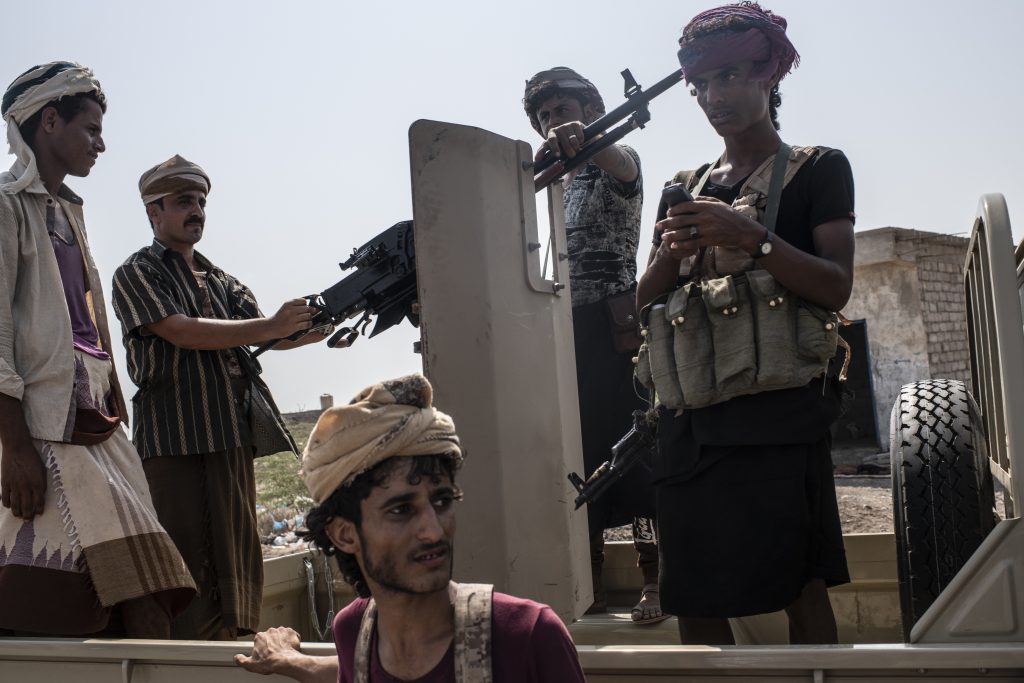
Kurt Braddock: One of the things that we need to think about before we can consider whether or not we can do a comparative perspective across militias (or whatever term we find more useful) is the typological scope we’re using. For most of us, our framework isn’t comparative, and in retrospect, that narrow scope exerts a large degree of influence over the conceptual paradigms used to deploy differing ideas of what constitutes a militia. For example, my own interpretation (as someone who studies American white supremacists but wouldn’t identify as an expert on militias) was built around the state, whether in terms of financial support, logistics, services, or other types of assistance to nonstate actors. But thinking across contexts, whether looking at Yemen or other areas of the Middle East in which I’m a nonspecialist, the additional viewpoints of experts on other regions dramatically expand the definition I would utilize. That observation extends, as well, to actions undertaken by nonstate armed actors, and makes it complicated to specify whether a particular attack can be considered a state-sponsored attack.
Sam Jackson: A key challenge to the comparative project here is the question of what specifically interests us in our investigations: what focal points of analysis may impact the formation of definitional categories? In the case of the United States, scholarship often divides the right-wing movement into types like racist, anti-government, and nativist. Are we interested in factors that render transnational or domestic groups analytically distinct, or are we interested in overlaps among various actors? Perhaps one avenue of productive categorization is scale. While we need to consider the issue of scale in relation to supportive populations and armed group mobilization, it’s important to keep in mind issues like overall population size when asking these questions. For instance, the Three Percenters take their name from the idea that only 3 percent of the U.S. needs to be convinced for a successful revolution to succeed, a frightening prospect that could translate into millions of armed Americans. Population size could present an interesting point of comparison and method for establishing manageable methodological criteria.
Renad: Explorations of categorical definitions also introduce the problem of methodological approach; perhaps it is more productive to set aside typological distinctions, since conventional labels may limit analytical flexibility. Looking at armed groups in Iraq over the past decade has resulted in a new approach to the analysis of power, and raised questions such as: What is structure? And what is extra-structural? The case of the Popular Mobilization Units (PMU) in Iraq presents a critical intervention in this field of armed group mobilization, as the term “PMU” is an umbrella category of differential structures and organizations that can be variously characterized hybrid, nonstate, state, and so forth.
When we analyze nonstate actors, we should try to look at all the factors at play, rather than focusing only on structural and organizational themes. There is a need to step away from conventional typological labels, and instead approach the issue from the perspective of power itself. One way to get at these dynamics is to map overarching networks, noting fluidity of networks and their interactions within the same overall movement.
Thanassis: Renad’s interest in the dynamics of power, charted through nodes of interaction rather than conventional categories, raises a potentially interesting set of questions. How much attention should we pay to tracking Twitter feeds or Telegram channels as sites of interaction and operations of power?
Sam: Social media usage by nonstate groups (armed or not) is an extraordinarily broad topic. It is difficult to pin down verifiable trends, given both the proliferation of platforms and different moderation policies. Online data provide a range of challenges as well as methodological possibilities for the study of militias and hate groups, and are the subject of several recent studies, such as Aaron Zelin’s monitoring of jihadist groups.
It’s worth thinking through the sources our work is based on, and the accessibility of archives—whether physical or online—in driving useful approaches. In my work on the Oath Keepers, I was interested in understanding the group’s public presentation of itself. Looking at publicly accessible data in the form of the organization’s Web presence was useful for this purpose. But the differences between communication on different platforms also comes into play. Platforms like Telegram may be beneficial for analysis of narratives or even planning, but might not provide much indication of on-the-ground participation or ideological support.
Nadwa: We also face a methodological challenge when we try to assess the extent of foreign influence or support for militias in different contexts. It is difficult to gauge the comparative successes or failures of foreign influence campaigns. But the role of particular typologies of influence can be useful to compare across regions. Compare what Iran has done with the Houthis versus what the Saudis and Emiratis have done with their proxies in Yemen. They’re all proxies, in some sort of manner, because they’re dependent. However, the mode of Iran’s support for the Houthis has been very effective. Tehran’s provision of military training and technology to the Houthis is an enormous factor in the group’s success. In contrast, foreign sponsorship that operates exclusively in, say, financial terms might not have resulted in the same level of relative militia sustainability.
Renad: When it comes to assessing things like foreign support, methodological issues come to the forefront in a way that has ramifications for other, related questions about nonstate armed groups, which make great efforts to hide data about their membership, finances, military capability, and chain of command. In the case of Iranian support given to groups operating in Iraq, much like in other parts of the world, actors may not always be transparent about their reasons for accepting outside sponsorship. In some cases, tracking finances can reveal influence, but it’s equally true that other means of influence are invisible by design.
“In some cases, tracking finances can reveal foreign influence. But it’s equally true that other means of influence are invisible by design.”
Interviews with militants can be a way to work around the fixation analysts often have with the legal aspects of armed group operations. But it’s also interesting to consider legal entanglements with the state, rather than factors like revenue from arms dealing and checkpoints. Reframing the focus from examination of militias as marginal or peripheral often reveals deeper contours to state–nonstate relationships. Many of these groups in Iraq have people in positions of power like the Ministry of Agriculture, enabling legal trade in, say, tomatoes. Researching these connections reveals revenue streams and avenues of collusion with the government apparatus. This approach is consequential for policy interventions, and moves us away from models that are designed for criminal organizations and gang activities.
Learn More About Century International
Shifting Relations to the State
Amanda: The specific conditions in which groups emerge create distinctive forms and categories. The contexts of origin—whether out of civil war or fragmentation from competitors—impact group evolution, self-perception, and orientation. Groups like Atomwaffen Division (a U.S.-based neo-Nazi group), Hezbollah, the Oath Keepers, and the Islamic State might share coherent ideological and operational characteristics that prove useful in comparative context, but their different origins, in times of peace or war, make them fundamentally distinct as movements.
Similarly, despite the American context of peacetime and stability from which domestic U.S. groups emerge, members of these groups believe that war is imminent, or in some cases, that an existential conflict is already underway—as in the conspiratorial theory of ongoing “white genocide.” To sympathizers and members, this condition of potential annihilation exists as a very real and present threat, galvanizing impulse, and organizing principle. That process might operate differently in active conflict zones, where the intensity might override the impact of perception for group formation and identity construction.
Nadwa: Fluidity of group roles vis-à-vis local constituencies over time is a critical factor in assessing the behavior of armed groups. In the case of Yemen, a broad range of nonstate actors exist, and the boundaries that define roles shift over time. In some cases, armed groups may function as an extension of the state. In other cases, armed groups that operate as proxies may function as if they are the state, as their funders request. However, should a legitimate state come into power, the same groups might well become absorbed into the apparatus of official governance.
Amanda: In addition to the demographics of armed groups within a given territory, or the condition of origin within conflict zones, it’s worth thinking through environments of peace that hold open the possibility for future conflict. Stated differently, what are we to make of groups that arise in conditions of peacetime and emerge around the stated goal of defense in conjunction with the state itself? The Ku Klux Klan (KKK) would like to see a revival of a certain social and political order while preserving the framework of the American state. But for groups oriented toward accelerationism—in other words, speeding up the transition to their desired objectives—destruction of the state and the broader global status quo takes precedence, with little to no thought accorded to a postconflict environment.
We should conceptualize armed groups as operating along a spectrum of different endpoint objectives vis-à-vis the state. In many cases, armed groups shift strategies and goals over time, and the changing orientation of these groups over time can reveal a considerable amount about the depth of ideological adherence versus identity-based affiliation.
Some groups that begin as individuals embedded within the state (such as military veterans) seek to defend the state itself from perceived outside aggression, but this can shift over time to an adversarial, oppositional, or revolutionary stance in which the state itself undergoes a redefinition as “the enemy.” Tracking these changes over time would enable a broader set of comparative possibilities.
Sam: Beyond the binary of peacetime and wartime, we can also highlight stances toward authority. The presence or lack of authority, as well as the impact of the threat environment, exert considerable influence on the response of militia groups to contemporary events. In the United States, militias aren’t engaged in a fight for authority in any meaningful sense, whereas armed groups in other contexts might well be engaged in a meaningful battle for political authority or territorial control. We need to account for imbalances of power vis-à-vis the state as well as with respect to other groups, both in peacetime and in conflict zones. But I wonder to what extent comparisons are appropriate, if indeed at all, between cases of American-based groups, for example, with those in Yemen, in which actors are responding to much different contexts of power, stability, and threat.
Thanassis: In terms of governance, armed groups seem comfortable shifting between different modes while interacting with their constituencies—sometimes they’re service providers, sometimes they’re ideological firebrands who create a shared community, sometimes they’re predatory warlords, sometimes they’re all these different roles at the same time. They can replicate the state’s institutions, or aim to replace them. It’s interesting to consider the function of identity in militia and armed group configurations. Are there codes of conduct that regulate member behavior with local populations, or govern spaces in which such groups function outside of political violence? What are the relationships between these groups and the populations in areas where they operate or control territory?
Amanda: It’s useful to distinguish between groups that aim to replicate state structures and those that advocate a wholesale replacement of the system. The KKK, as well as other groups not identified as explicitly racist, have positioned themselves, since 1950, as champions of the “original” national program (“100 percent American, white, and Protestant”). This KKK approach contrasts with accelerationists, such as Atomwaffen, which seeks to topple the state itself.
Jacob: Some armed groups may offer the possibility of a straightforward linkage with the state apparatus—the armed groups may be splinters of the government, or they may be insurgent organizations that are later absorbed into the structures of governance. But other armed groups have a more ambiguous connection to the state, in the form of nostalgic fictions of state structures. In some contexts, people are conceptualizing state power and reassertion of authority, legitimacy, and control where a strong state apparatus never, in fact, existed. State consolidation often entails rewriting the past, in an effort to integrate militias into future state structures (or for that matter, to demobilize them).
“Some armed groups have an ambiguous connection to the state, in the form of nostalgic fictions of state structures.”
Aron: The local environment affects the decision or obligation of militias to provide services. When someone is not guaranteed access to services expected from a state for citizens, armed groups may act as intermediaries to provide not only security, but also other goods. In prewar Syria, a strongman figure such as the area party chief, an intelligence official, or a favored local notable could facilitate access to services, and you generally needed to pay bribes to get anything done. During the war, armed groups and their commanders often filled that role instead. In areas controlled by the government, militias that provide services tend to be offshoots of the state itself.
Sam: It’s interesting to consider the meaning of “constituency” in cases, like the United States, where militias operate but do not control territory. Such militias are not subject to the same type of pressure to offer services and financial support for members, sympathizers, and locals. Yet these groups still share a fetishization for violence and a paramilitary vision for themselves. There are limited examples of these militias offering things like provision of emergency aid, but when the groups do not control territory, they are nowhere near as influential as the government, and the aid they provide is ad hoc and sporadic, typically without formal apparatuses, policies, processes, or even offices through which such aid flows.
Amanda: In the case of Syrian militias, funds from state sponsors like Iran can ensure support for the education of martyrs’ children. In peacetime cases like the United States, we tend to think of militia financial support as secondary to ensuring group loyalty and constituency support. However, cases such as the KKK in its “third era” (the period since 1950) provide an interesting comparative data point. Membership dues and regalia prices (all manufactured and controlled by the Klan) contributed to things like legal defenses, support for widows, and a range of social services. Elite members like business owners also work to gain constituent loyalty through providing “Klan insurance plans” and things of that nature. The groups provided financial support to members even though state services exist, and there are no foreign sponsors.
Jacob: Something also to consider is when the state strategy isn’t control but rather disruption, perhaps because that’s the only option to influence a situation. The historical antecedents for this are well known. The UK’s war against the Provisional Irish Republican Army in Northern Ireland (known as the Provos or, simply, the IRA), made use of infiltration and disruption techniques that had been developed in the British suppression of the Mau Mau insurgency in Kenya in the 1950s. These techniques included inserting operatives to pose as insurgents to attack other insurgents, which was refined by Rhodesian special forces in the 1970s. In Ireland, there was the famous case of Freddie Scappaticci, a leading and notoriously brutal figure in the Provos’ internal security, who turned out to be a double agent for the British.
All of these hold considerable parallels for anyone familiar with Algeria in the 1990s. In that case, there are accusations in every direction—that there were individuals who defected from military intelligence and joined the insurgents, and that some Algerian military intelligence conducted operations dressed like Islamist insurgents so the insurgency would be blamed. But one of the most interesting revelations has been that the insurgents pushing the most radical and nefarious agendas turned out to be military intelligence infiltrators. So, military intelligence helped internally radicalize the conflict to disrupt the rebellion by marginalizing the more established and conventionally thinking (in military terms) leaders in the insurgency. Such infiltrators (double agents and “turned” rebels) used these tactics to create a cohort of increasingly violent radicals who attacked civilians seemingly indiscriminately, and were easy to manipulate because they were so predictably extreme. The Algerian state was too weak at the time to fight the insurgency by occupying the whole country. These examples raise the interesting question of which conditions cause a state to think they can directly confront insurgent groups, and which conditions cause a state to think that infiltration and manipulation are more effective.
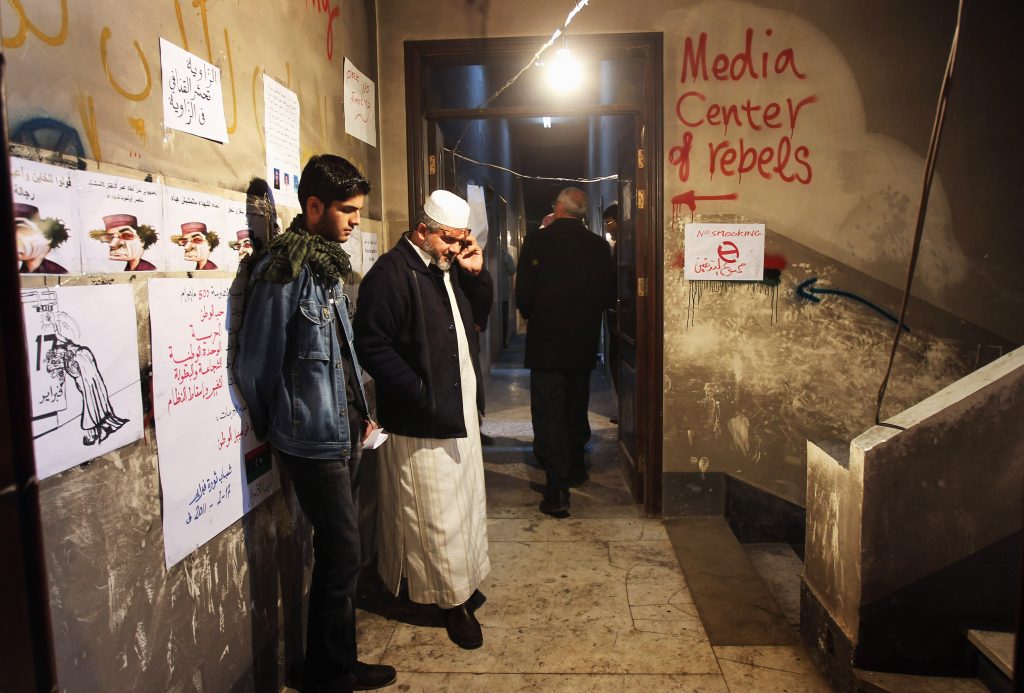
Aron: One of my takeaways from Syria is that fragmented insurgencies need a clearly driving, dominating force if they’re going to cohere. Attempts to create militias from scratch or consensually merge many small groups into bigger forces tend not to work very well. You need groups that share a really intense ideological motivation, which is why all really successful rebel unification projects in Syria and Iraq have been jihadist-led. Or alternatively, you need an actor that’s big, rich, and mean enough to just kill or buy all local resistance and make weaker groups fall in line. Khalifa Heftar’s Libyan Arab Armed Forces in eastern Libya might be an example of that.
An effective militia will ideally have both ideological motivation and a powerful backer. We saw the Islamic State deploy that combination to great effect in 2013–15. At that time, it was, by far, the war’s most effective unifier of Syrian militants, steamrolling smaller rebel groups and absorbing their manpower while killing or scattering those who tried to resist. A less effective but still interesting example, on a local scale, was the Islam Army, which built on a core of committed Salafi ideologues to ruthlessly work its way toward the top inside the besieged Ghouta region of Damascus.
On the other end of the spectrum of effectiveness, you had the internationally-backed attempts to cobble together a Free Syrian Army that would not be deeply Islamist. The CIA and allied intelligence screeners ended up selecting groups that were primarily loyal to villages, clans, gangs, or whatever other local demographic they had grown from—because those parochial loyalties were the most effective battlefield motivators that remained, once you refused to let Islamism structure the movement. And—surprise, surprise—those efforts failed miserably.
“An effective militia will ideally have both ideological motivation and a powerful backer. The Islamic State deployed that combination to great effect in 2013–15.”
Turkey has been a little bit more successful in making the same Free Syrian Army groups cohere in a new formation, the Syrian National Army, since the United States and most others pulled out of Syrian rebel politics in 2016–17. Partly, this success has come because the Turks have had a higher tolerance for bad behavior and bad ideologies; and because they use the attractive power of Islamism to their advantage instead of trying to counter it. But it’s also because they have deployed thousands of troops to run things on the ground. And even then, they have not done very well—the Syrian National Army militias keep clashing with each other and falling apart.
Transnational Connections
Amanda: It’s interesting to consider how such armed groups impact one another within the same local context, at regional levels, and transnationally. Is there an exchange of ideas or a process of mutual learning that develops from points of contact—whether it’s the exchange of foreign fighters across nation-state lines, or through the broad intervention of military occupation? American neo-Nazi accelerationists refer to Siege (a newsletter by neo-Nazi James Mason that has been compiled into a book) as a strategic roadmap for instigating social and political chaos to collapse and eventually replace the state. Jihadist strategists like Abu Musab al-Suri and leaders like Abu Musab al-Zarqawi produced remarkably parallel approaches in Iraq and Syria—despite the clear contextual variance of civil war and stability. Are there indications of direct exchange, or did these approaches develop independently? As researchers consider these questions, it will be important to look at whether principles of competition drive active learning through direct contact and the exchange of recruits across nation-state boundaries.
Nadwa: The circumstances of foreign conflict can also open up opportunities for outside intervention, in keeping with other states’ geopolitical objectives. For example, the Emirates oppose the Yemeni government, and likely created proxy groups to eliminate the Muslim Brotherhood in opposition to the Emirati state. The Emirates benefits from a policy of controlled chaos as a way to prevent the emergence of a strong Yemeni state with a unified chain of command. In the case of Yemen, where the international community struggles to operate in an environment saturated by competing armed factions and their international backers, there is an understandable desire among some policymakers for simple solutions and straightforward answers. But we can’t treat the shifting agendas and priorities of differing factions as concrete, unchangeable facts just because we want simple solutions.
In Yemen, I don’t see any potential for a viable strong and credible state with the capacity to bring together all these different groups. Rather, the international community should focus on pragmatic solutions and practical answers instead of the current, unrealistic prioritization of unity before all else. Hybrid actors are the new reality, and that must be acknowledged first and foremost. Above all, we can’t afford to ignore the international ramifications of even seemingly localized armed groups.
Amanda: There appears to be a connection between American military intervention in the Middle East and returning veterans’ increased hostility toward foreign populations. Such shifts in threat perception may be a byproduct of deployment, they may be the result of radicalization during deployment, or they may simply indicate the presence of bigoted viewpoints underlying the motivation behind initial enlistment. The aftermath of the American failure in Vietnam produced forms of imperial blowback responsible for the emergence of the contemporary white supremacist movement, with disillusioned veterans at the helm of militant, oppositional groups determined to “bring the war home”—in the words of former KKK leader and “leaderless resistance” pioneer Louis Beam. Transnational collaboration between various armed groups with a white supremacist or communitarian orientation has accelerated in recent years, even though it is not a new phenomenon. This has especially been the case since Internet technologies have evolved.
Sam: Although there has been considerable research done on transnational ideological connections, it seems there is less work available on state support. What I have encountered in recent research, however, are issues like French far-right antecedents to the alt-right, and various forms of traditionalism. But I think we need to be careful about jumping the gun on questions of “state support” as conventionally used. In particular, the people asking about this issue are often motivated by a desire to deflect—as if our own extremism somehow needs an outside force and external scapegoat. That said, there are certain states with track records of capitalizing on cultural and political divisions, and cultivating such conflicts to whatever strategically advantageous ends they can find. (Russia, of course, comes to mind.)
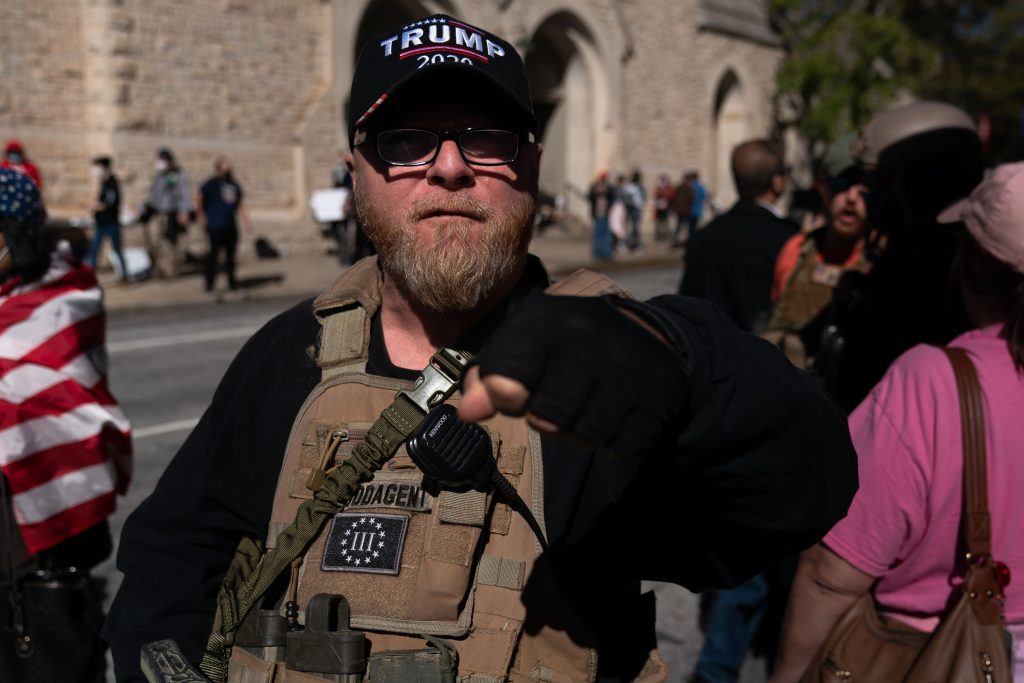
Aron: I’m all for comparing groups in different settings and eras, but I think it’s generally more fruitful to look at groups that do similar things than at groups that share an ideology or classification.
Contemporary far-right or far-left militant groups in Western countries seem to bear some resemblance to the radical organizations that came out of the Middle East and Western Europe in the 1960s, 1970s, and 1980s. Those groups were also small, hyper-ideological, and focused on terrorist-style action. Think, for example, of the Baader-Meinhof Group in Germany—also known as the Red Army Faction—or some of the small Palestinian and Lebanese ultra-left groups of that era. They hijacked airliners, blew up cafés and discos, assassinated public officials, and so on.
On the other hand, they do not much resemble today’s militia or insurgent factions on the battlefields of Syria, Iraq, or Yemen. Take Hezbollah: it is a hybrid guerrilla organization, nestled inside a broken state, that has been waging a semi-conventional war in Syria. It has engaged in covert operations and international violence, and it is good at putting together car bombs. But it is, frankly, not similar to groups that do only those things.
The lumping together of a lot of different organizations as “terrorists” is unhelpful and conceals the vast difference between them. For example, the Islamic State seems difficult to analyze as a terrorist group. It is primarily a guerrilla group, or something akin to a warlord army—probably more recognizable to a scholar of civil wars, or even medieval warfare, than to someone who studied the IRA, or Palestinian hijackers. The reason we in the West keep boxing the Islamic State into the same “terrorist” category as Baader-Meinhof or the Abu Nidal organization is because it is relevant to us through its terrorist-type attacks in the West, and because the 9/11 wars have completely scrambled the terminology.
“The 9/11 wars have completely scrambled the terminology around ‘terrorism.’”
Amanda: After the Capitol insurrection, a growing number of commentators have suggested that white supremacist groups are learning from ostensible jihadist analogues such as the Islamic State, when the reverse may be true. Deep views of white supremacist history, particularly with a focus on network ties, may challenge the utility of facile comparisons, or assertions of unidirectional influence. Historicizing strategic innovations in military strategy embraced by armed groups like the Islamic State and al-Qaeda alongside white supremacists like Tom Metzger’s White Aryan Resistance (WAR) and Atomwaffen, for example, can shed light on the development and adoption of methods like leaderless resistance and the “lone wolf” phenomenon.
What seems particularly critical to me is the need to assess potential assumptions that we, as researchers, all carry with us. The jihadist-white supremacist comparative grouping that has become prominent in the literature of political violence often proceeds largely from siloed expertise areas (such as experts on the Middle East making assumptions that white supremacists follow from jihadist counterparts). These assumptions often result in incorrect chronologies. For example, white supremacists were the first to use lone-wolf-style organizational structures and Internet technology.
Gender and religion, two thematic areas conventionally brought to bear on the issues of political violence and terrorism in the Middle East, are particularly ripe points of comparison for the American context. Gender plays a huge role in mobilizing white supremacist men. Meanwhile, U.S. armed groups appeal to followers using religious credos, including Christian Identity’s racist theology, Odinism, and Esoteric Hitlerism.
When we start thinking about militias in different contexts, it helps clarify another challenge: a group that successfully uses violence to achieve influence might begin its life identified as a militia and evolve into an unnoticed part of the political landscape. As someone who specializes in the Middle East and North Africa as well as the far-right in the United States, it’s impossible for me to ignore the “abortion wars” that unfolded in the Midwest across the late 1980s into the first few years of this century. What begin as a domestic terrorism campaign has long since transformed into traditional politics, conducted through lobbying, advocacy, and legislative campaigns. But it’s useful to think of that period of violent activity as a part of the spectrum of militia activity. If we are more open-minded about typologies and definitions, we gain insight into how groups use violence and for what political ends. This insight allows us to consider not just the Islamic State’s violence, but also the political program it pursues.
Identity, Ideology, Affiliation
Sam: Let’s talk about the intersection between political culture and political violence. How do groups tap into long-standing narratives about identity? In the case of the Oath Keepers, for example, the organization has long used foundational narratives about “Americanness” in their messaging and motivation, a factor which should be carefully examined in light of several members’ conspiracy charges over the Capitol insurrection.
Kurt: Here, the ideas of affiliative loyalty and the depth of ideological attachment come into play. In the case of American militias, members seem to jump from group to group and evidence remarkably little affiliative loyalty. The case of these groups in the United States appears to be almost petty relative to one another and the state. For example, the Proud Boys’ previously strong support for Donald Trump dropped off sharply after the Capitol insurrection, when they didn’t receive the response they expected, and appears to have galvanized a transformative shift in their ideological definitions and goals.
Amanda: The nature of an armed group impacts our ability to quantify membership numbers and estimate social support. But we also have to consider what constitutes “support,” and how we might measure it. Restricting the scope of inquiry to groups with clearly delineated organizational structures and normatively constructed membership ties neglects the critical impact of such actors as Anders Breivik, the far-right Norwegian terrorist who killed seventy-seven people in 2011. This analytical gap is a serious deficiency in a period of global conflict characterized by leaderless resistance and the Internet-enabled dissemination of ideological inspiration.
Aron: Militant groups with different ideologies tend to resemble each other, because there are things that are fundamental to militant or clandestine activity. I’m thinking now, for example, of the narratives and support infrastructure that get constructed around dead members and prisoners. Whether in civil wars in the Middle East and Africa or in U.S. and European militant radicalism, armed groups will glorify martyrdom, memorialize the fallen, and—if they can—provide support to families of martyrs and imprisoned supporters. They celebrate the steadfastness of prisoners and try to free them, with a dedication that can seem out of proportion to their importance. It’s common to all kinds of militant groups, whether the IRA, Hezbollah, the Popular Front for the Liberation of Palestine, the Islamic State, or the French resistance in World War II.
It’s not difficult to understand the reasons for these similarities. If you want people to risk their lives and freedom, you need to show that you care, that you will try to get them out of jail and look after their loved ones. To be ready to die for the cause, they must at least know that their sacrifice will be remembered. It inspires individuals and hardens group cohesion, but it also helps bind families and external supporters to the group itself and sustain loyalty over time.
One of the biggest armed groups in Syria now is the Syrian Democratic Forces, which is dominated by supporters of the Kurdistan Workers’ Party (the PKK), a transnational group with roots in the Turkish part of Kurdistan. The PKK recruited a lot of Syrian Kurds in the 1980s and many were killed fighting the Turkish army. When I interviewed Syrian Kurdish dissidents in the first decade of this century, several pointed out how the PKK had lost a lot of clout in Syria but retained a core of support from families of those fallen fighters. It continued to lavish attention on martyrs from the 1980s—both because that’s how the PKK works, but also because it kept the families involved. When the current conflict began in 2011, the community base that the PKK had sustained all those years proved extremely valuable.
My point is, even though martyrdom celebrations are expressed in ideological terms, they should perhaps be viewed primarily as a function of militancy. It has to do with the nature of conflict, and you actually see elements of it in regular militaries as well: celebrating veterans, memorializing fallen heroes, the ethos of not leaving any soldier behind. It’s how a violent organization needs to function culturally.
Amanda: Some American armed groups appear to similarly prioritize this kind of approach, as in the case of WAR and its financial support for incarcerated sympathizers and members—in some cases, this particular support can acquire a coercive aspect, as well (such as threatening to leave a prisoner with no group support of any kind behind bars upon breaches of group code).
Thanassis: Online and on-the-ground mobilizations connect in ways that I think we don’t fully understand. We know that propaganda and messaging do not equal military power, but we also know that narrative and rhetoric can, on occasion, dramatically enhance an armed group’s fortunes. The Islamic State was an extreme case of a group successfully transforming online activity into real-world political and military power. In the case of Iraq, small but disciplined groups have exerted an outsize influence on broader public opinion through their crafting of narrative products. Such groups have, in turn, influenced the broader political direction of society—quite deliberately.
Amanda: In Yemen, the Houthis have played a prominent role in co-opting humanitarian discourses, and Breivik’s attack in Norway introduced the conspiracy theory of “cultural Marxism” to the wider Scandinavian public, which then injected itself into political discourse. Similarly, in the United States, white supremacists’ conspiracy theories have undergone a process of political “laundering,” in which elected officials now use phrases with considerable historical baggage, such as “the Great Replacement” (the conspiracy theory that nonwhites are replacing whites in Western societies). To what extent have these armed groups succeeded in shifting the Overton window across very different political contexts and in disparate regions, to make formerly unpalatable ideas mainstream?
In the United States, white supremacists’ conspiracy theories have undergone a process of political ‘laundering’—elected officials now use phrases connected to ideas that were once too extreme for mainstream politics.
Kurt: Particularly in the contemporary American context, any examination of mass mobilization into armed groups and associated causes has to consider the role of disinformation and right-wing radicalization writ large, including militias. Can disinformation be challenged with communications strategies like “attitudinal inoculation”—where you try to make the population more immune to extremist ideas? What role does stochastic terrorism—politicians and pundits using coded language to implicitly call for violence—play in motivations to enact violence? Moreover, how does narrative enable both affiliation as well as disaffiliation, active support versus tacit sympathy? A key area to consider in relation to right-wing radicalization is the role of language, different registers of discourse, and the ways in which such language poses a challenge.
Sam: The idea of linguistic frames raises an interesting point. A distinction between “true believers” and bandwagoners might be analytically useful. I think distinguishing between those deeply attached to an ideological orientation and those “along for the ride” is important for some purposes, and less so for others. I tend to think it matters less for trying to understand whether action is really concerning—I don’t care whether someone is wearing a Pepe the Frog logo because they are genuinely white supremacist or because they are trolling people. I think the distinction matters more for thinking about deradicalization or demobilization: I suspect that different messages are effective for those goals depending on individuals’ motivation for joining one of these groups.
Kurt: In the case of the United States, where “white genocide” is an expressed grievance (despite its lack of embeddedness in reality) and fear motivating many on the far right, we need to account for the manner in which these groups latch onto other, shared grievances beyond the immediate interest group to piggyback or co-opt potentially related support networks. Perhaps a useful comparative frame of reference might investigate the confluence of personal grievance (when individual motivations can be assessed) and the amplification of unrelated, or at the least, less-personalized issues. Do armed groups endeavor to contextualize social, economic, and political issues within potential affiliates’ perceptions of personalized grievance as a means to mobile action?
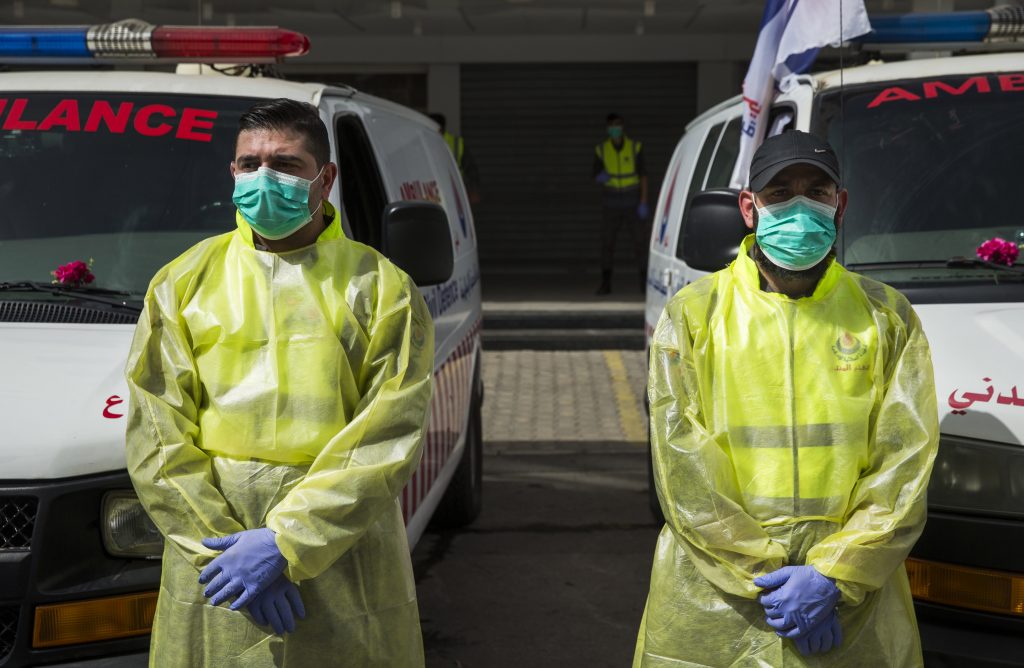
Thanassis: When we try to understand armed groups, and figure out how to counter their violence, we have to work hard to comprehend their motives. The participants in armed violence take their own grievances seriously, and believe that violence is the only, or best, way to pursue their political interests. Analysts and policymakers have to take seriously the perceived grievances of militants—and that doesn’t mean taking those grievances literally. For example, we’ve seen generations of loyalists to Shia religious armed groups in Lebanon, and now, Iraq who nurture a belief that they’re being persecuted on the basis of their religious sect. They’re willing to fight and die on behalf of this belief, which gives great power to their faction. In early periods of these groups’ history, Shia people were persecuted in both Lebanon and Iraq. Now, however, Shia factions dominate political life, but are still able to mobilize loyalty, and gain legitimacy, by leveraging this perceived grievance.
A similar process takes place in the vastly different context of white supremacists in the United States, who propagate false claims of “white genocide” and other forms of white victimhood. While never forgetting that these grievances are imagined, it is crucial to identify their role in motivating members of armed groups. We need to figure out if genuine belief in these imagined grievances is driving recruitment, and violence, in far-right armed groups. That doesn’t mean policymakers address the fake grievance, but it does help explain the drivers of membership and violence, and provide some guidance for how to counter the group. Unfortunately, as we’ve seen in almost every context, a clearheaded understanding of the motives of militants doesn’t necessarily translate into an effective blueprint for stopping or containing them.
This report is part of “Transnational Trends in Citizenship: Authoritarianism and the Emerging Global Culture of Resistance,” a TCF project supported by the Carnegie Corporation of New York and the Open Society Foundations.
